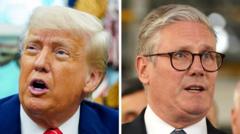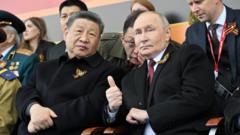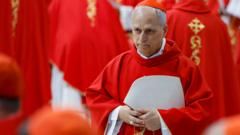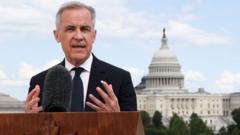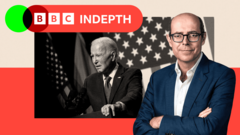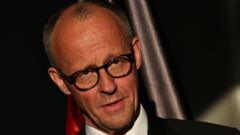The latest debate offered insights into party strategies and candidates’ positions, revealing a deeply competitive political landscape as the general election approaches.
**Takeaways from Canada's Final Election Debate: Leaders Clash Ahead of Polls**
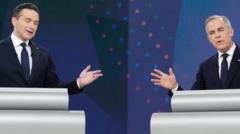
**Takeaways from Canada's Final Election Debate: Leaders Clash Ahead of Polls**
Canada's major party leaders faced off in a crucial debate with Trump and pressing issues stealing the spotlight.
The leaders of Canada's four prominent federal parties participated in their second and final debate ahead of the upcoming general election, but the focus frequently shifted to an unlikely figure, US President Donald Trump. Entering the two-hour debate, Liberal leader Mark Carney, who remains a frontrunner in the polls, needed to prove his mettle against his opponents: Conservative leader Pierre Poilievre, New Democratic Party leader Jagmeet Singh, and Bloc Québécois leader Yves-Francois Blanchet.
One major topic of discussion was Canada's trade conflict with the US. Carney faced pointed criticisms about the legacy of his predecessor, former Prime Minister Justin Trudeau, with Poilievre indicating that the past decade under Liberal governance has seen significant challenges like housing shortages and rising living costs. "How can we trust that you will be any different?" Poilievre challenged Carney, while Blanchet insisted that Carney must demonstrate he is not merely a continuation of Trudeau's policies. Carney defended his position by emphasizing his short time in office and asserting, "I am a very different person than Justin Trudeau."
As the debate shifted to US tariffs, each leader articulated their approaches to negotiating with Trump. Canada has been grappling with substantial tariffs imposed on its goods, and while initially advocating for reciprocal tariffs, Carney noted a need to consider Canada’s smaller economy. His tone hinted at a potential softening in relations, citing a more respectful dialogue with Trump following a recent conversation.
While much of the discourse centered around US influences, the debate also illuminated the candidates’ diverging visions for Canadian policy. Poilievre promoted a vision of reduced government involvement and lower taxes aimed at stimulating economic growth, while Singh championed an expansive social safety net. Carney, aligning with centrist values, suggested that government should play a catalytic role.
In this politically diverse landscape, parties not aligned with the main two face dwindling visibility. National polls show Singh's New Democrats struggling with only 8.5% support—a figure that could significantly diminish their parliamentary presence. Singh fought to assert his party's importance during the debate, imploring voters not to allocate all power to Carney.
Despite a heated atmosphere, the debate maintained an underlying sense of civility. There were moments of cordiality, such as Carney’s measured responses during Poilievre’s critiques, and even after contentious exchanges, leaders were seen engaging amicably post-debate.
This final debate marks a critical point as Canadians prepare for the upcoming election, with clear distinctions drawn among party leaders' policies and platforms.

